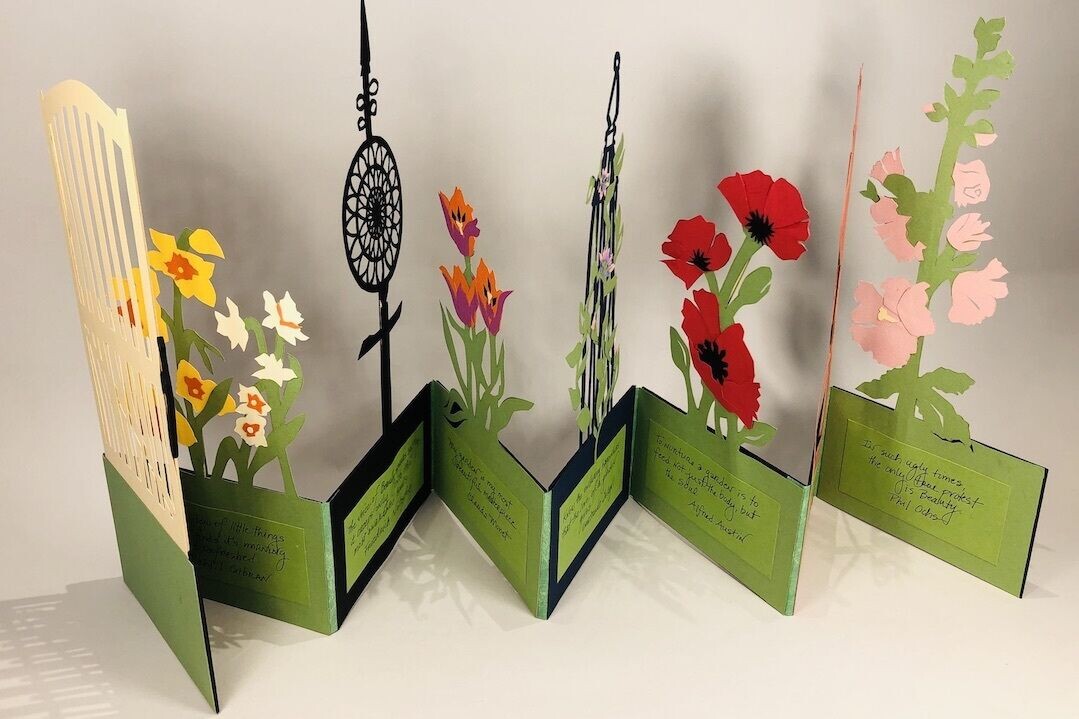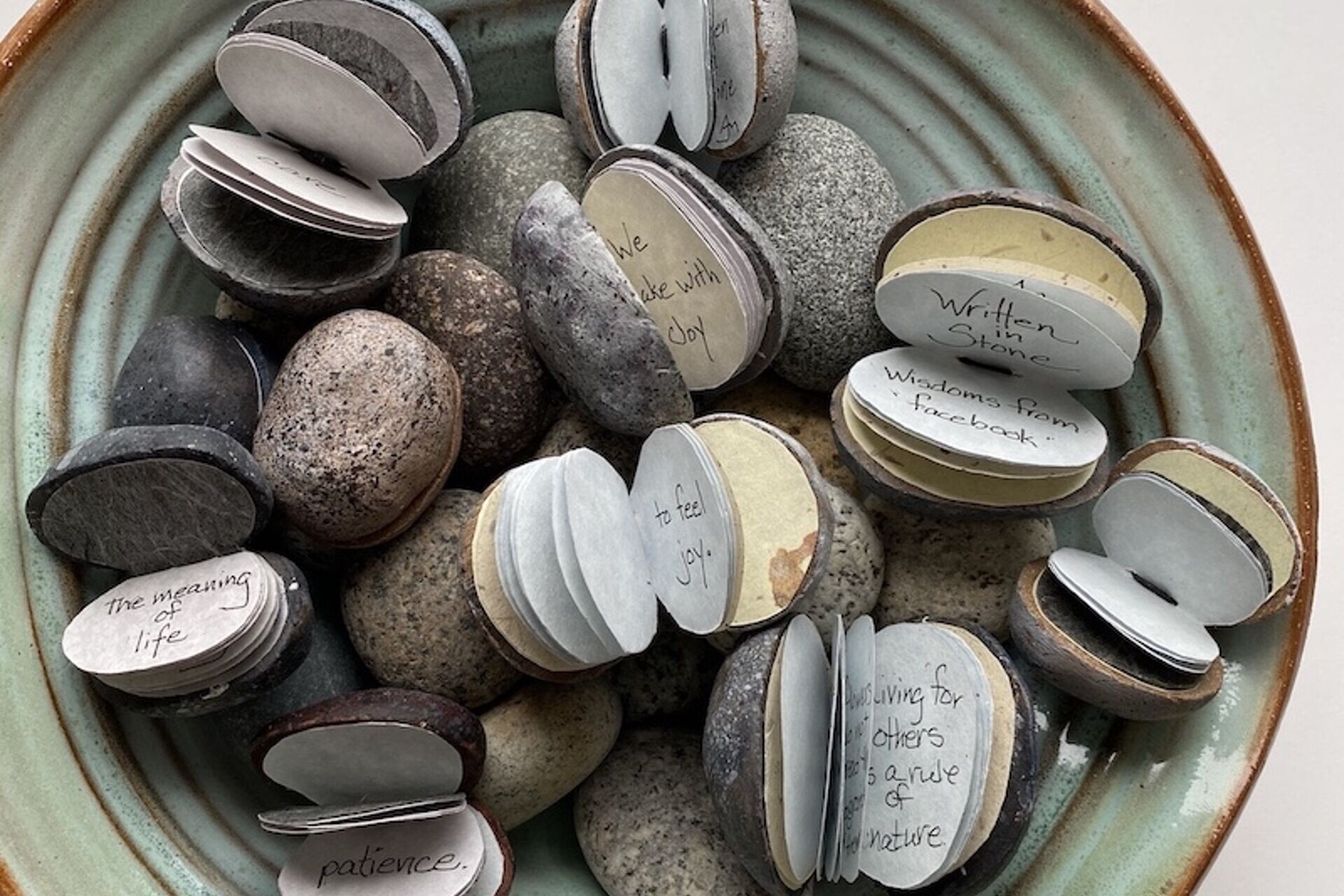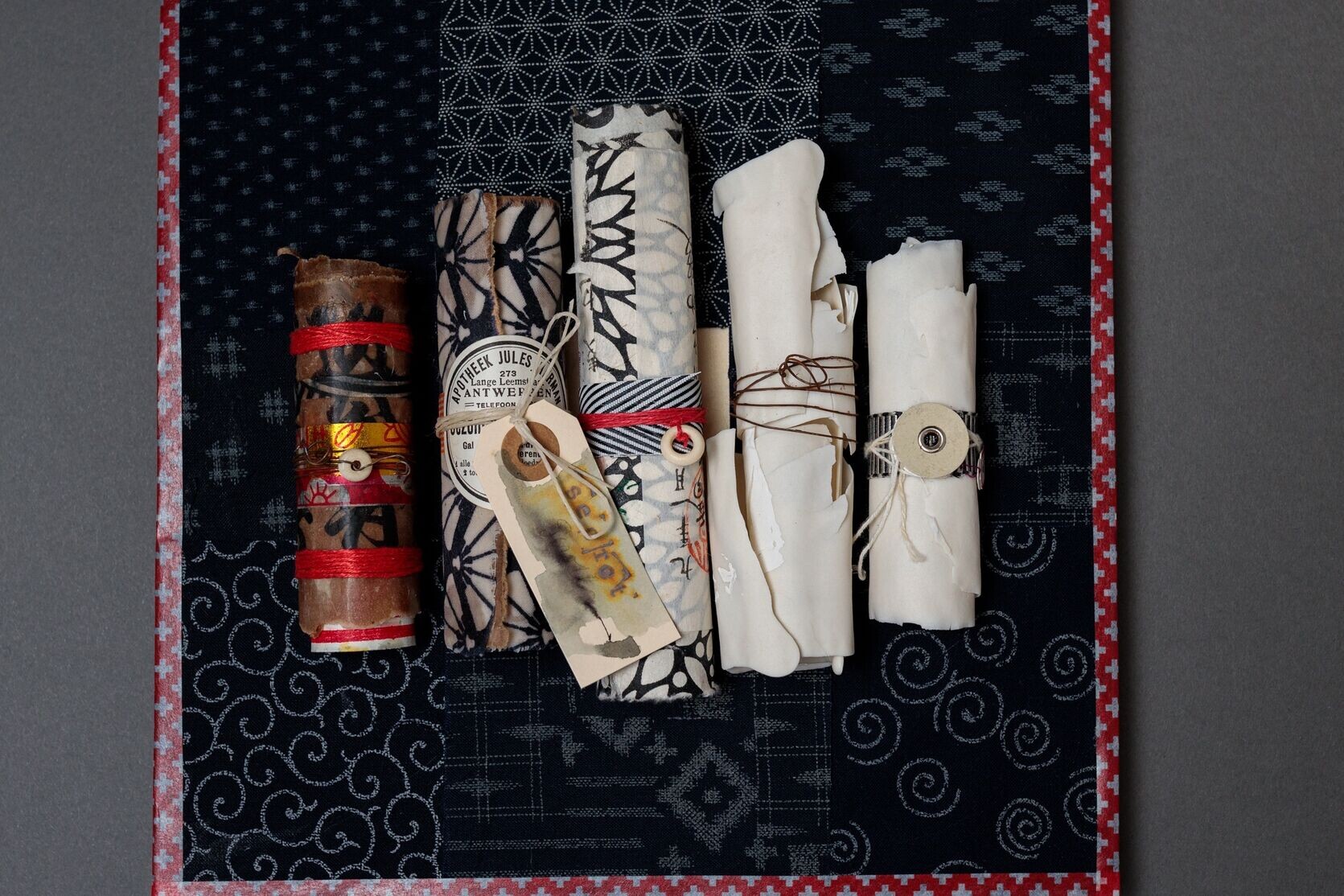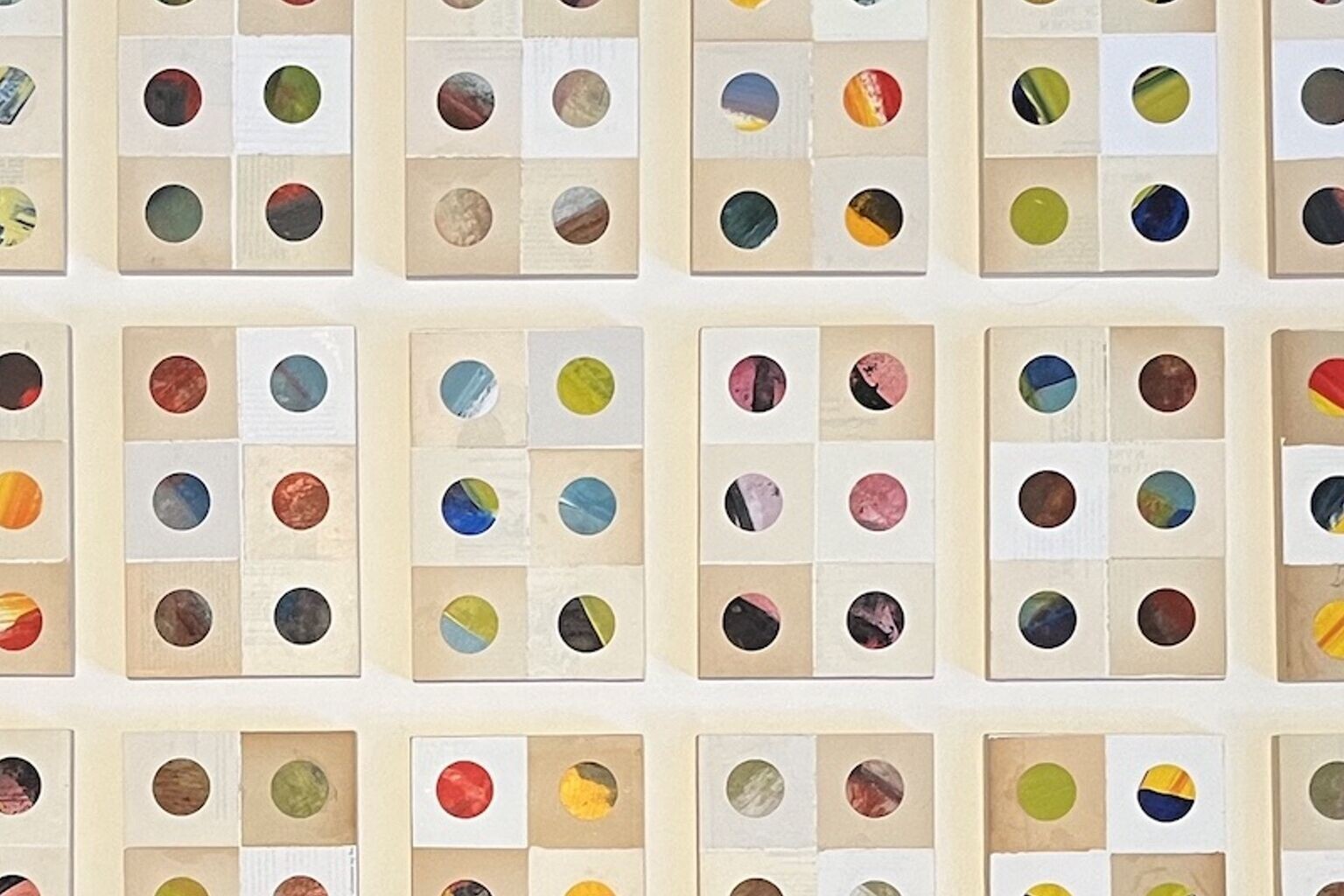Book Art, Artist's Books, and Unbound

above - a page of The Book of Kells
Not all of the Book Art in Unbound is artist's books. We exhibit paintings and sculptures OF books, ABOUT books, and MADE FROM books. The exhibit will run from June 22 - July 15, 2023.

above - Timeline - by Dorsey Hogg
made from Encyclopedia Brittanica pages
Submit your Book Art to Unbound vol.XI, 2023

Debra A. Kraemer's piece, Within My Garden Go, in its custom-made container box. Her piece was the second-place winner in our People's Choice awards, Unbound vol.x, 2022.

Her piece lifts out from its box and unfolds into an accordion-style book.

Written in Stone by Anne Joppe-Mercure
small stoneware "books" with hand-tied bindings, pages with and without text

Keepsakes by Nina Gaby is an assemblage of porcelain "scrolls". Scrolls on parchment or vellum were among the first books ever made.

Novel Endings by Carole McNamee is an array of 18 colleges made from repurposed book pages.
Our annual Unbound exhibit calls for artworks inspired by "anything a book can be", and features contemporary "Artist's Books" and more works of Book Art. The creation of hand-made artist's books dates back at least to medieval times, when monks collectively labored over illuminated manuscripts such as The Book of Kells. Individual monks might take years to illustrate and decorate the pages of religious texts, which were then stacked and bound together on one side. This style of manuscript, called a codex, is the ancestor of what we commonly refer to as a "book" today.
After the invention of the printing press, the artist's relation to book creation and book publishing changed greatly. Books became primarily a method of conveying text to readers, and, while visual artists provided layouts and illustrations, the author was seen as the main creator. So the crafting of hand-made books became one of artistic intent - transforming the idea of a "book" into an art object.
Starting in the 1970s, many artists revived the craft of book-making and started making artist's books with distinct political and narrative intents. Most contemporary artist's books reflect historically-crafted forms, while expressing personal and artistic values. The Artist's Book is not merely read, it is viewed and experienced as any artwork.

Red Spot by Marilyn Gillis